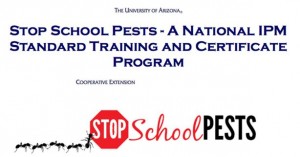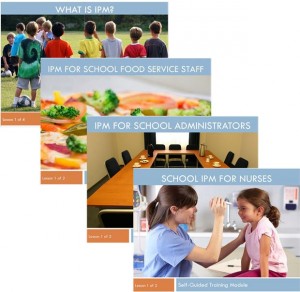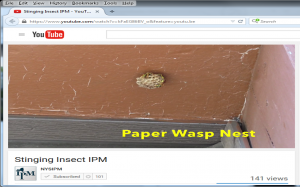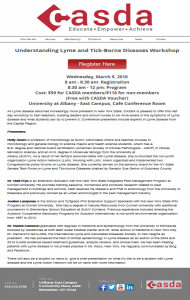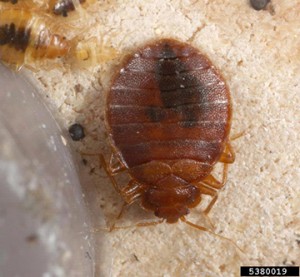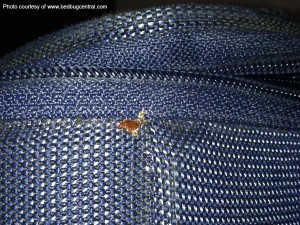“It is December, and nobody asked if I was ready.” – Sarah Kay
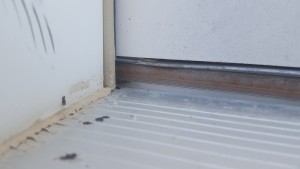
Exclusion takes constant vigilance. Evidence of mice can be found outside this well sealed door.
Winter has officially set in with temperatures in the single or even negative digits. It might seem a bit late for pest-proofing, but some pests are still on the move. Cold-blooded insects such as boxelder bugs, brown marmorated stink bugs, and multicolored asian lady beetles are tucked away for the winter. Preventing warm-blooded pests that are still out in the cold from entering is good IPM. Acting now can also prevent early spring infestations from mammals and birds attempting to nest in your building.
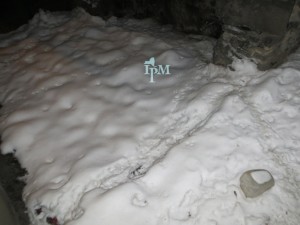
Even in harsh winter conditions, rats must forage for food. These trails highlight that rodents will follow known paths. Notice the large area of undisturbed snow in comparison to the few sets of tracks.
A light snow cover that lasts for a few days can help your inspection efforts by showing evidence of mammals attempting to enter the building. If you find tracks and droppings, carefully inspect those areas to identify why animal signs are concentrated in that area. Chew marks can show where mammals are attempting to break through into the building.
You can also take advantage of the bare tree limbs to inspect higher parts of the building such as rooflines for signs of possible access.
If you find any issues, take steps to exclude pests.
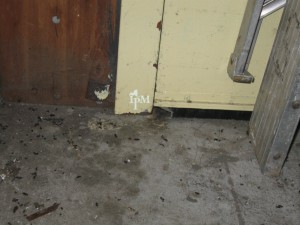
Rodents can chew through thin-bristle brush door sweeps, allowing pest entry.
- Replace door sweeps that are no longer filling the gap
- Seal openings with exclusion products such as sheet metal, hardware cloth, rustproof “steel wool” replacement products, and flexible sealants
- Keep foundation perimeter free of debris
- Keep gable, soffit, roof, and other vents in good repair and made with animal-resistant materials and design
- Prune tree branches to be no closer than ten feet from a building
For more information on excluding pests, visit Best Management Practices for School IPM: Indoor BMPs: Structural: Walls, Windows, Roofs, Eaves and Beasts Begone! A Practitioner’s Guide to IPM in Buildings.

